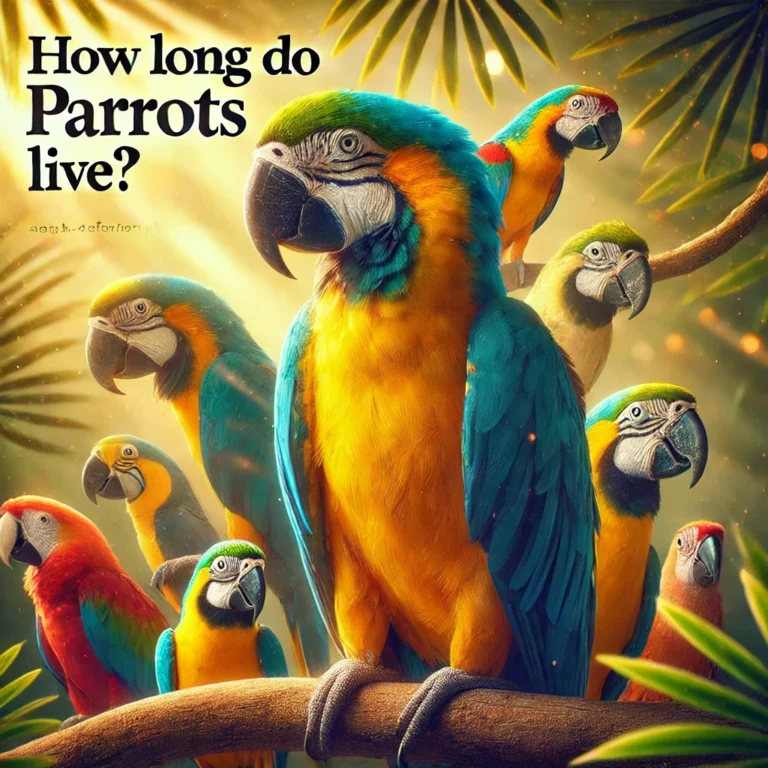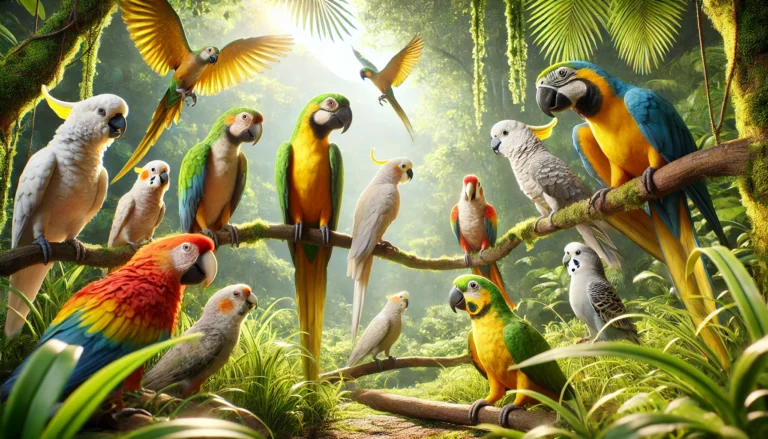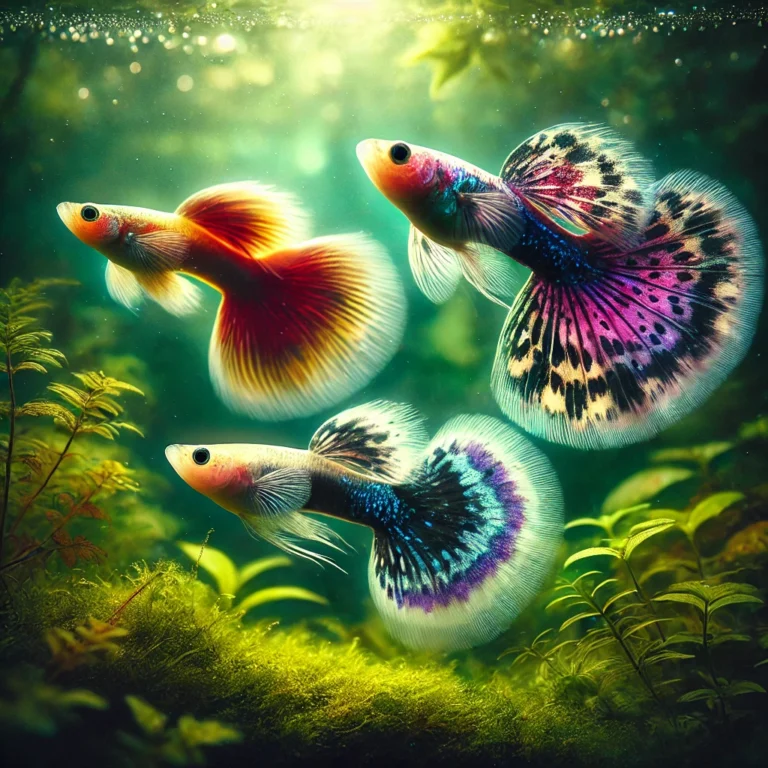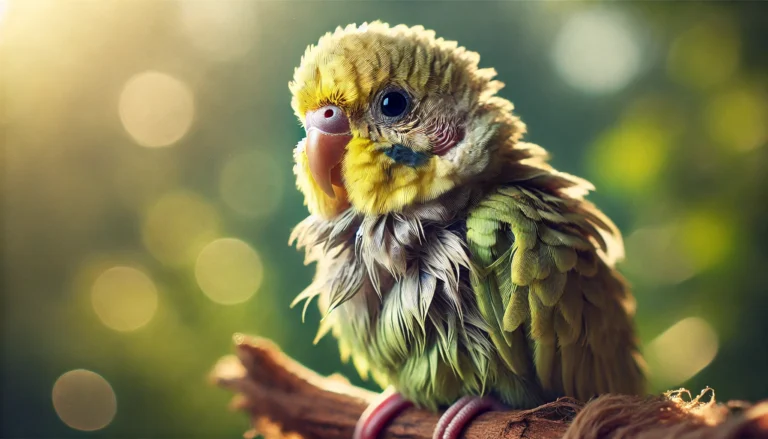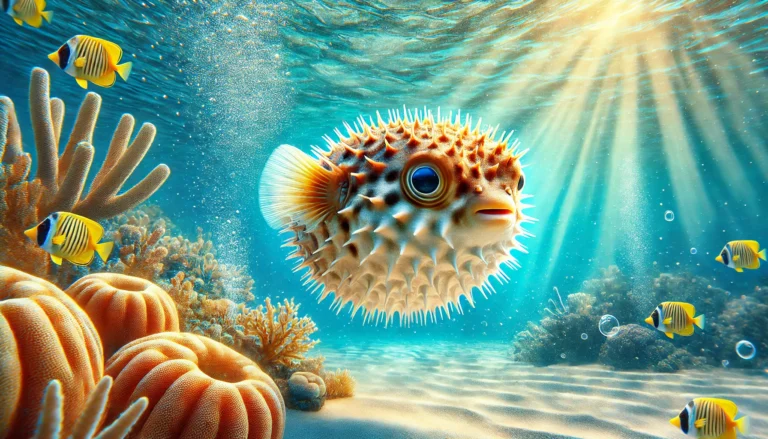what do turtles eat? Amazing Facts on turtle food
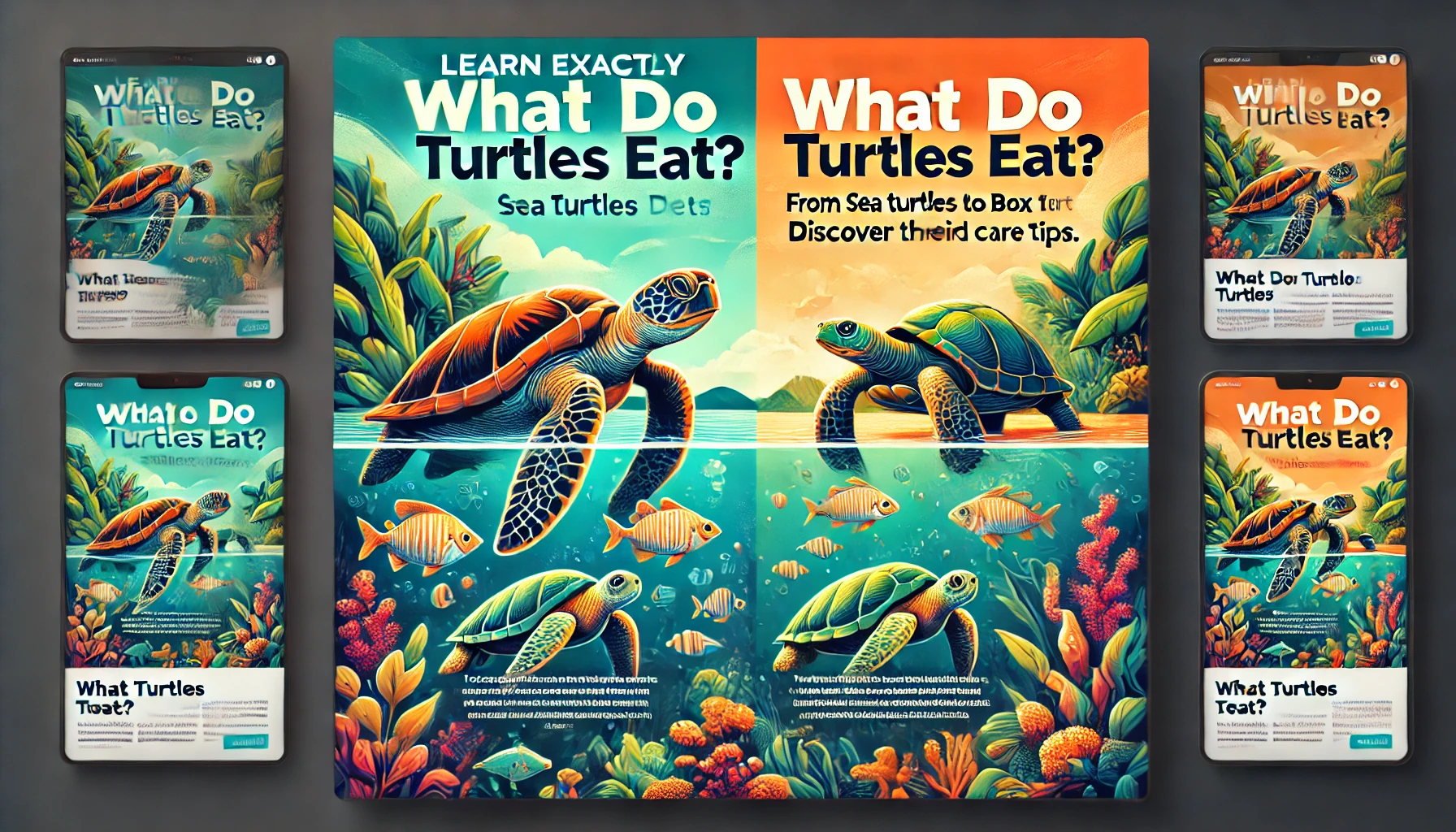
The Basic understanding of what do turtles eat?
Turtles, with their varied habitats and ancient lineage, display an array of dietary preferences that align with their environmental adaptations and species-specific needs. This article will delve deep into what turtles eat, examining the diets of different types of turtles including sea turtles, box turtles, and tortoises. We will cover everything from the typical turtle food items to more specific dietary curiosities like whether turtles can eat carrots or grapes.
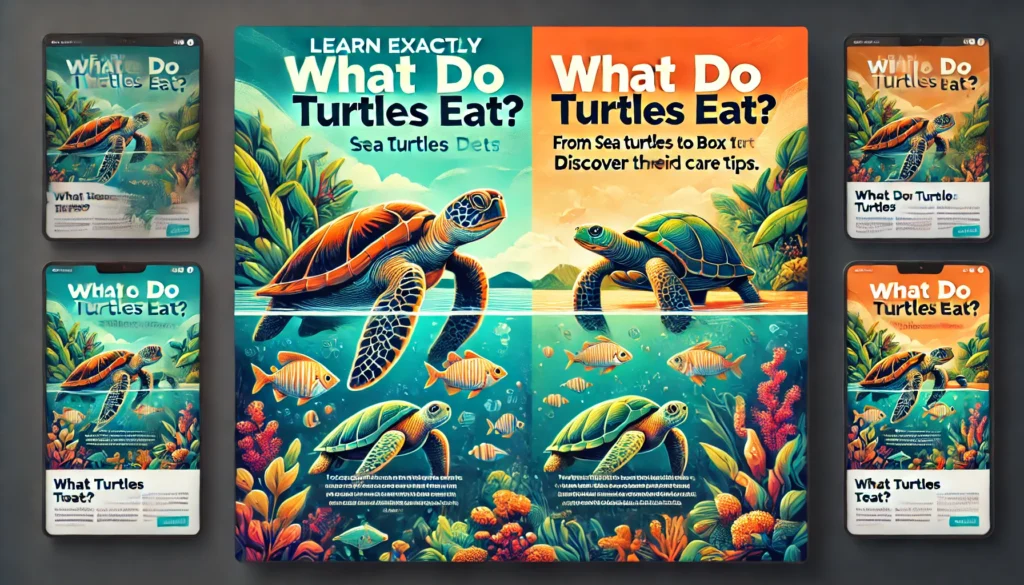
Understanding Turtle Diets: The Basics
Turtles are classified according to their dietary habits: herbivores, carnivores, and omnivores. This classification greatly influences what individual species consume on a daily basis.
- Herbivorous Turtles: These turtles, such as the green sea turtle, mostly consume algae and sea grasses, focusing on plant-based items in their natural habitats.
- Carnivorous Turtles: Species like the snapping turtle display a preference for meat, including fish, small mammals, and in some cases, other aquatic creatures.
- Omnivorous Turtles: Box turtles and other similar species may consume a balanced diet of both animal and plant matter, depending on what is available in their environment.
What Do Specific Types of Turtles Eat?
- Sea Turtles: The diet of sea turtles varies widely among species. Leatherback sea turtles primarily consume jellyfish, while hawksbill turtles might munch on sponges and other invertebrates. The loggerhead eats mainly bottom-dwelling creatures such as crustaceans.
- Box Turtles: These terrestrial turtles enjoy a diet that includes fruits, vegetables, worms, and even fungi. Box turtle food can vary significantly with local availability and season.
- Tortoises: Known for their strictly vegetarian diet, tortoises eat grasses, leaves, and fruits. In captivity, it’s important to ensure they receive a variety of greens and vegetables to mimic their natural diet.
Do you know?
Bull dogs, often referred to simply as ‘Bull dogs’ or ‘English Bulldogs,’ have a history that is as fascinating as their squished faces. Originating from ancient mastiff-type dogs, the breed was first mentioned in English literature around 1500, labeled as bold and ferocious
What Can Turtles Eat from Human Food?
While turtles can eat many things, not all human foods are safe for them. It’s essential to know which foods are safe and beneficial, and which should be avoided. For instance, turtles can eat carrots and apples, but should avoid processed foods like bread and dairy products. Grapes and strawberries can be given in moderation, but always in small quantities to prevent health issues.
Nutritional Needs and Common Health Concerns
A turtle’s diet must be balanced to avoid nutritional deficiencies. Turtles need calcium for shell and bone health, and vitamin A to prevent eye and skin problems. Many aquatic turtles are also prone to vitamin D deficiency without adequate exposure to sunlight or appropriate UV lighting.
Feeding Turtles: Practical Tips
- Variety is Key: Just as in the wild, captive turtles thrive on a varied diet. Offering a mix of appropriate vegetables, proteins, and supplements can help mimic their natural eating behaviors.
- Commercial Turtle Food: Many types of commercial turtle pellets are formulated to provide a balanced diet with all the necessary nutrients, which can help simplify feeding.
- Watch the Amount: Overfeeding is a common problem in pet turtles, which can lead to obesity and health issues. Monitoring food intake and maintaining a feeding schedule can prevent this.
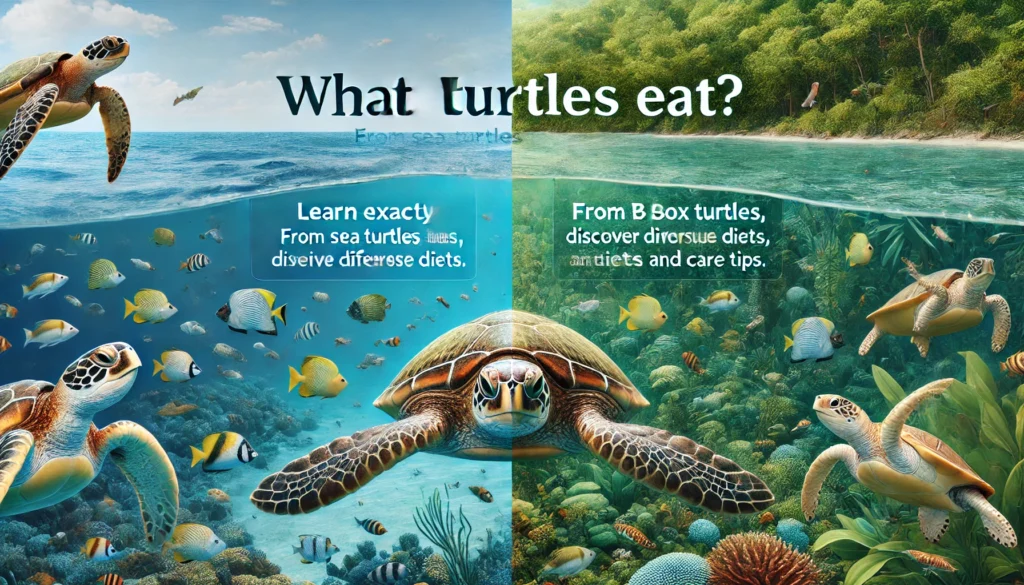
Frequently Asked Questions
- How often do turtles eat? This can vary widely depending on the species and age of the turtle. Young turtles tend to eat daily, while adult turtles may eat several times a week or even less frequently.
- Do turtles eat fish? Many aquatic and omnivorous turtles eat fish in the wild and can be fed fish in captivity, though it should be properly sourced to avoid contaminants.
- What do baby turtles eat? The diets of baby turtles are generally similar to those of adults, but they require more protein for growth.
Conclusion
What turtles eat encompasses a broad spectrum of foods, from leafy greens in the diets of land-dwelling tortoises to the fish and jellyfish preferred by aquatic species. Understanding and replicating the natural diet of your specific type of turtle is crucial to ensure its health and longevity. Whether you’re feeding a pet turtle or rehabilitating a rescued one, a proper diet is key to a happy, healthy turtle.

